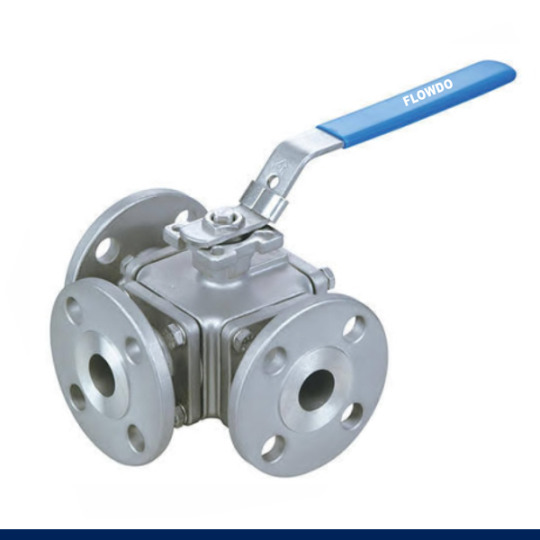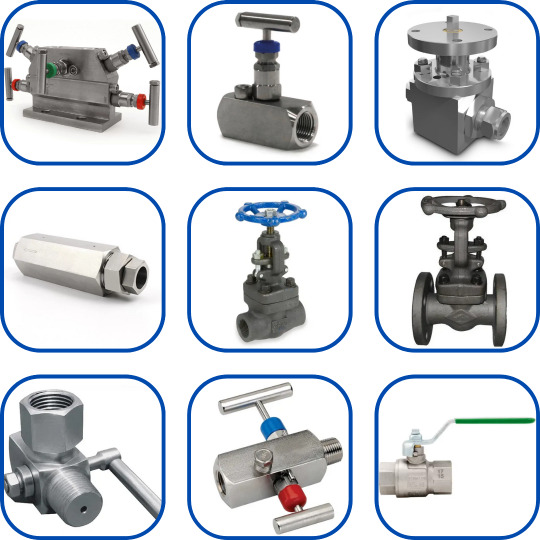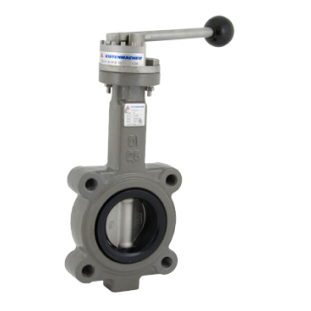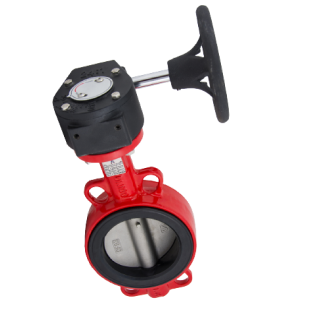#Ball Valve
Text

Brass faucet factory wholesale direct sales
2 notes
·
View notes
Text
#ball valve#check valve#gate valve#globe valve#china valve factory valve#gatevalve#ballvalve#valve#youtube#cantonfair
0 notes
Text
A Ball Valve is a quick-operation, on/off valve that uses a pivoting ball to control the flow of liquid or gas. It has a bore through which media passes, and its position determines whether the valve is open or closed. At Cair Euro we are the premium Ball Valve Manufacturer in India.
#ball valve#plug valve#cair euro#valve exporter#valve manufacturer#ball valve manufacturer#ball valve supplier#valve supplier
0 notes
Text

Upgrade your machinery with our durable hydraulic #BallValves ! 💪 Get smoother operations and reliable performance every time.💧🔧
0 notes
Text
ball valve manufacturer in ahmedabad

Flowdo Valves Leading Ball Valve Manufacturer in Ahmedabad. We Offer ball valve, globe valve, gate valve, check valve, butterfly valve, forged steel valve in India.
#ball valve#ball valve manufacturer#ball valve supplier#ball valve in Ahmedabad#ball valve manufacturer in Ahmedabad#ball valve supplier in India
0 notes
Text
Ball Valves: Their Advantages and How Do They Function?
Ball valves are a type of quarter-turn valve that’s widely used in various industries due to their simple yet efficient design and versatility. Let us discuss their advantages and functioning today. For more details visit https://www.hamzafasteners.com/ball-valves-their-advantages-and-how-do-they-function/

0 notes
Text

Ball valve is not only a simple structure, with good sealing performance, but also in a certain nominal range of small volume, light weight, less material consumption, small installation size, and small driving torque, simple operation, easy to achieve rapid opening and closing. The ball valve is evolved from the plug valve, its opening and closing parts as a ball, using the ball around the axis of the stem to rotate 90° to achieve the purpose of opening and closing. Ball valves are mainly used to cut off, distribute, and change the direction of medium flow on the pipeline. The ball valves designed as V-shaped openings also have good flow regulation functions.
0 notes
Text

The Top Valve Fittings Manufacturers,Supplier & Exporter in USA - Mcneil Instruments
Mcneil Instruments stands as the leading valve fittings manufacturer, supplier, and exporter in the USA, specialising in a wide array of valve fittings. With a focus on quality and precision, we offer tube fittings, needle valves, ball valves, check valves, and more, ensuring adherence to industry standards. Valves play a critical role in fluid and gas pipe networks, regulating flow effectively. As top industrial valve manufacturers, we provide the best instrumentation valves to meet diverse industry needs. Manifold valve, needle valve, ball valve, check valve, globe instrumentation valve, gate instrumentation valve, huge cock valve, and block bleed valve, our products are engineered to deliver optimal performance and reliability, making us the preferred choice among valve suppliers in the USA.
#valve fittings#manufacturer#USA#Manifold valve#needle valve#ball valve#check valve#globe instrumentation valve#gate instrumentation valve#Gauge cock valve#block bleed valve
0 notes
Text
Tips for Proper Installation and Maintenance of Butterfly Valves
Butterfly valves are widely used in various industries for regulating and isolating the flow of fluids. They are known for their compact design, low pressure drop, and quick operation. However, to ensure their optimal performance and longevity, it is crucial to install and maintain butterfly valves properly. Here are some essential tips to follow:


1. Choose the Right Valve: Before installation, it is vital to select the right butterfly valve for your specific application. Consider factors like the type of fluid, pressure, temperature, and flow rate. Consulting with a reputable valve manufacturer or supplier can help you make an informed decision.
2. Proper Valve Position: Ensure that the butterfly valve is installed in the correct position. In general, it should be mounted horizontally with the stem upright. This allows for smooth operation and avoids unnecessary stress on the valve, reducing the risk of leaks or malfunction.
3. Prepare the Pipeline: The pipeline where the valve will be installed should be properly prepared. Remove any debris, dirt, or foreign objects that may hinder the valve's proper functioning. Clean the mating flanges to ensure a secure and leak-free connection.
4. Tighten Flange Bolts: Use the correct torque values to tighten the flange bolts evenly. Over-tightening may cause damage to the valve or gaskets, while under-tightening can result in leaks. Refer to the manufacturer's guidelines or consult an expert for the recommended torque values.
5. Lubrication: Apply a suitable lubricant to the valve stem and other moving parts according to the manufacturer's recommendations. Regular lubrication ensures smooth operation and helps prevent the valve from seizing or sticking.
6. Regular Inspection: Perform routine inspections to detect any signs of wear, leakage, or damage. Check for loose bolts, worn seals, or corrosion. It is recommended to have a maintenance schedule and follow it diligently to avoid unexpected valve failure.
7. Maintenance by Professionals: While some basic maintenance tasks can be performed by in-house personnel, it is important to involve qualified professionals for more complex maintenance or repairs. They possess the necessary knowledge and expertise to handle critical issues that may arise.
Now, let's discuss the importance of choosing a reliable butterfly valve supplier or manufacturer. One such company is Al zerwa Trading in UAE known for their high-quality valves and excellent customer service. They offers a wide range of butterfly valves designed to meet the diverse needs of industries such as oil and gas, water treatment, pharmaceuticals, and more. With a focus on innovation and customer satisfaction, Al zerwa ensures that their valves adhere to international standards and undergo thorough quality checks.
In conclusion, proper installation and maintenance of butterfly valves are essential for their reliable and efficient functioning. Following the tips mentioned above, along with choosing a reputable supplier like Al zerwa, will help you achieve optimal performance and long-term durability of your butterfly valves.
0 notes
Text

Description:
Understanding Different Types of Valves provides a comprehensive overview of key valve varieties crucial in fluid control systems. Gate valves, with linear motion, excel in isolation, while globe valves offer nuanced regulation. Ball valves ensure swift on/off control, check valves maintain unidirectional flow, and butterfly valves offer versatile usage. Each valve type caters to specific needs, from precise throttling to rapid shutoff, impacting industries like oil, water treatment, and manufacturing. This infographic empowers decision-makers to select the right valve for optimal system performance, emphasizing the importance of evaluating specific application requirements. Explore this informative guide to enhance your knowledge of these essential components shaping fluid dynamics across various sectors.
Gate Valves:
Gate valves are essential linear motion devices that manage the flow of fluid by lifting a gate obstructing the path. These valves are particularly valuable in applications where a full and unobstructed flow path is required. The operation of gate valves involves raising the gate to permit flow and lowering it to block the passage of fluid. This on/off functionality makes gate valves suitable for isolation purposes, allowing for efficient control of liquid or gas flow.
Globe Valves:
Globe valves are characterized by their spherical-shaped bodies and a movable disk that regulates the flow. Unlike gate valves, globe valves provide more nuanced control over fluid flow, making them ideal for applications that require throttling and precise regulation. The design of the globe valve allows for fine-tuning the flow rate by adjusting the position of the disk, offering versatility in managing the movement of liquids or gases through a pipeline.
Ball Valves:
Ball valves utilize a rotating ball with a hole to control the flow of fluids. These valves are particularly advantageous for applications requiring quick shutoff or on/off control. The simplicity of their design, consisting of a spherical closure element, ensures a reliable and efficient operation. Ball valves find extensive use in various industries where rapid control and shutoff are critical, providing a durable solution for managing the flow of liquids or gases.
Check Valves:
Check valves, also known as non-return or one-way valves, permit fluid flow in only one direction while preventing backflow. These valves play a crucial role in ensuring unidirectional flow within pipelines. The design of check valves typically includes a mechanism that allows the flow to open the valve while preventing reverse flow. This feature is vital in preventing the contamination of systems and maintaining the desired direction of fluid movement, making check valves essential components in a wide range of piping applications.
Butterfly Valves:
Butterfly valves feature a rotating disc within a cylindrical passage to control the flow of fluids. These valves offer versatility, serving both on/off and throttling applications. The quarter-turn motion of the disc allows for quick and efficient control of the flow, making butterfly valves a popular choice in situations where precise regulation is necessary. Their compact design and ease of operation contribute to their widespread use in various industries, including water treatment, HVAC systems, and chemical processing.
Visit:
0 notes
Text
Have you ever wondered about the inner workings of ball valves? This article delves into the concept of ball valves and explores their various construction types.
Introduction to Ball Valves:
Valves are available in a myriad of types and sizes, serving as devices that can be opened or closed to control the flow of liquids or gases. A common household example is the kitchen faucet. In this article, we focus on a specific type – the ball valve.
What is a Ball Valve?
A ball valve is a quarter-turn valve employing a pivoting ball with a drilled-through hole to manage the flow. When aligned with the flow direction, it permits the passage of fluids or gases. Conversely, a 90-degree turn stops the flow completely. The valve's status is indicated by the handle: parallel means open, perpendicular means closed.
Key Features of Ball Valves:
Ball valves are robust and ideal for applications requiring a simple on/off action. They maintain durability and consistent performance over numerous cycles, offering reliability even after prolonged periods of disuse. Flow rate can be controlled by partially opening or closing the valve. Despite their advantages, ball valves lack the fine control for throttling applications that other valves provide.
#3 way ball valves#Ball Valve#Ball Valve advantages#Ball Valve Manufacturer#Ball Valve Selection Guide#Freture Techno
0 notes
Text
Welcome to the heart of innovation and precision – the Globeox universe! In this blog, we embark on a fascinating journey through the intricate world of industrial engineering, focusing on a spectrum of exceptional products that define excellence and reliability. Join us as we explore the global perspective offered by Globeox in the realm of air compression and beyond.

#GlobeoxDiscoveries#Air Expansion Valve#Bull Nose#Bull Nut#Brasss Manifold Valve#Ball Valve#Ball NRV#Battery Air Heater Coil#Compressor#Compressor Valve#Cross Head & Bearing#Compressor Spares#Cylinder Head#Cardon Filter#Cylinder Valve#Cylinder Co2#Drain Valve#Push Pump2#Poppet Vallve#Isolation Valve#Piston Rod#Flexible Hose#cylinder Key#GLobe Valve#Inlet & Outlet Cam Set#Manifold Valve Spares#Piston Ring#Temperature Guage#Pressure Guage
1 note
·
View note
Text

Gate valve,stainless steel gate valve,RTV gate valve,CF8 gate valve,Class150Lb gate valve,API600 gate valve
#ball valve#check valve#gate valve#globe valve#china valve factory valve#gatevalve#valve#youtube#cantonfair#ballvalve
0 notes
Text

Ball Valve Handle
0 notes
Text

Pressure gauge valves: Your control center for precision! 🌡️ From the versatile SS ball valve for flow control to the precise SS needle valve for fine adjustments 📌, and the reliable SS non-return valve for fluid direction 🔄. Don't forget the safety with SS safety valves ⚠️ and the convenience of SS manifold valves for multiple connections 🤝. Choose accuracy, choose reliability! ⚙️🔧 #GaugeValvesMatter 🌟💧 #valves #pressuregaugevalves
0 notes